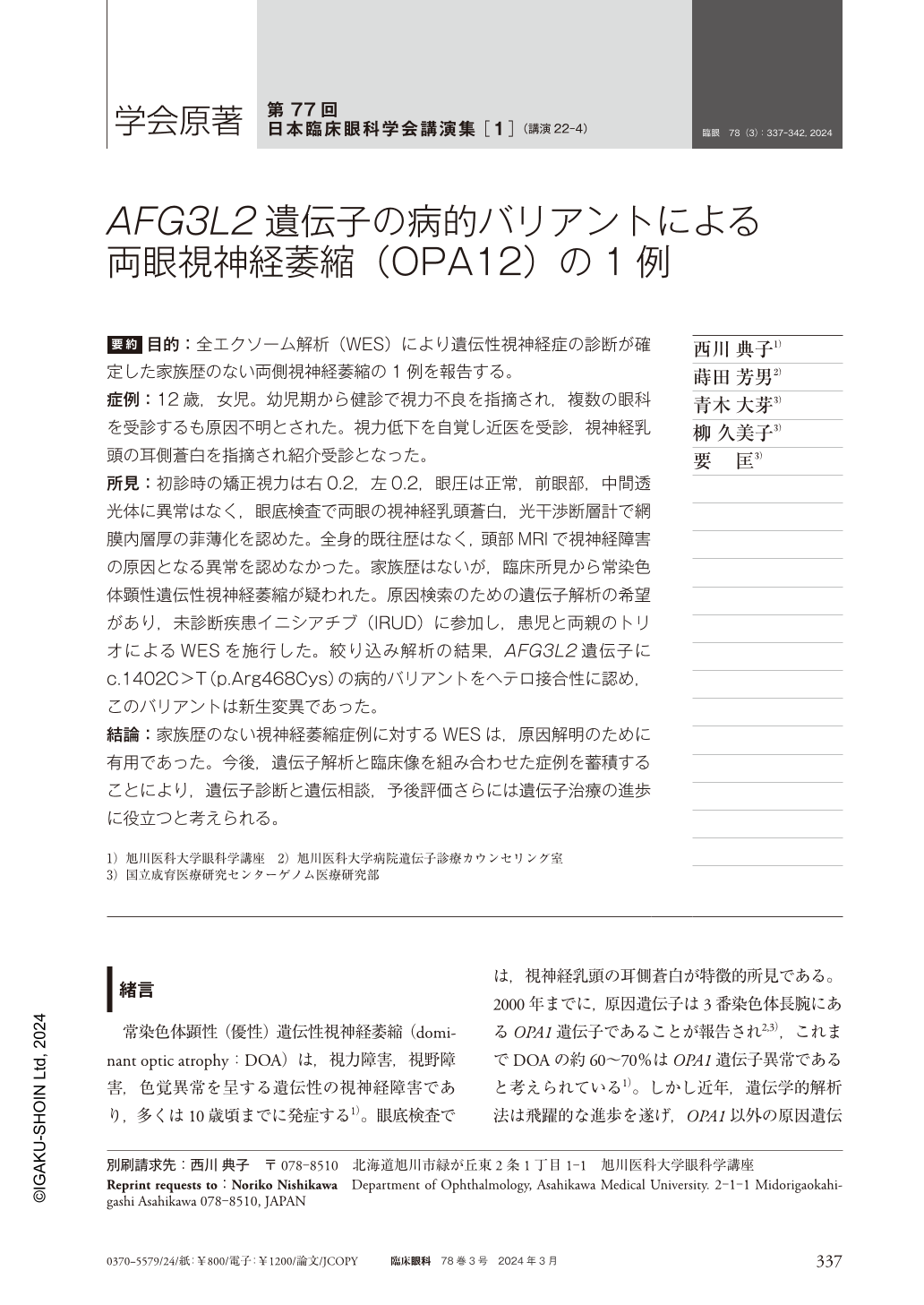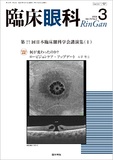Japanese
English
- 有料閲覧
- Abstract 文献概要
- 1ページ目 Look Inside
- 参考文献 Reference
要約 目的:全エクソーム解析(WES)により遺伝性視神経症の診断が確定した家族歴のない両側視神経萎縮の1例を報告する。
症例:12歳,女児。幼児期から健診で視力不良を指摘され,複数の眼科を受診するも原因不明とされた。視力低下を自覚し近医を受診,視神経乳頭の耳側蒼白を指摘され紹介受診となった。
所見:初診時の矯正視力は右0.2,左0.2,眼圧は正常,前眼部,中間透光体に異常はなく,眼底検査で両眼の視神経乳頭蒼白,光干渉断層計で網膜内層厚の菲薄化を認めた。全身的既往歴はなく,頭部MRIで視神経障害の原因となる異常を認めなかった。家族歴はないが,臨床所見から常染色体顕性遺伝性視神経萎縮が疑われた。原因検索のための遺伝子解析の希望があり,未診断疾患イニシアチブ(IRUD)に参加し,患児と両親のトリオによるWESを施行した。絞り込み解析の結果,AFG3L2遺伝子にc.1402C>T(p.Arg468Cys)の病的バリアントをヘテロ接合性に認め,このバリアントは新生変異であった。
結論:家族歴のない視神経萎縮症例に対するWESは,原因解明のために有用であった。今後,遺伝子解析と臨床像を組み合わせた症例を蓄積することにより,遺伝子診断と遺伝相談,予後評価さらには遺伝子治療の進歩に役立つと考えられる。
Abstract Purpose:We report a case of bilateral optic atrophy with no family history of hereditary optic neuropathy that was performed whole-exome sequencing(WES)analysis.
Case:A 12-year-old girl was referred to our hospital with decreased visual acuity and optic disc pallor. She had been reported to have poor visual acuity since early childhood, but the cause had not been identified by several ophthalmologists.
Findings:On initial examination, the best-corrected visual acuity was 0.2 in both eyes, intraocular pressure was normal, and there were no abnormalities in the anterior segment or optic media of either eye. There was no systemic history or abnormalities on brain MRI that could be the cause of optic neuropathy. Although there was no family history of visual impairment, hereditary optic neuropathy was suspected based on the clinical findings. The patient and her parents requested genetic testing to identify the cause and participated in the Initiative on Rare and Undiagnosed Disease. Trio-WES analysis was performed on the family, and filtering analysis identified a de novo heterozygous pathogenic variant of the AFG3L2 gene, c.1402C>T (p.Arg468Cys), in the patient.
Conclusions:Comprehensive genome analysis for a patient with dominant optic atrophy, without a family history, was useful for elucidating the cause. The accumulation of cases combining the genome analysis and clinical presentations will be beneficial for genetic diagnosis and counselling, prognostic evaluation, and further promotion of gene therapy in the future.

Copyright © 2024, Igaku-Shoin Ltd. All rights reserved.


